MEDICINE HAT, ALTA — When it comes to open-pit mining, having more than 100 million tonnes of overburden sitting on top of your deposit is typically a situation best avoided, but for junior Victory Nickel (TSX: NI; US-OTC: VNCKF) that challenge turned into an opportunity.
When the company’s geological staff took a closer look at the make-up of its shovel-ready Minago nickel sulphide project in Manitoba they found something not just interesting, but potentially economically significant: frac sand.
The discovery turned 140 million tonnes of overburden that lay between Victory and Minago’s sizeable nickel resources from a burden into a possible boon. And it led the company westward to a shuttered industrial complex outside of Medicine Hat, Alta., called the Seven Persons (7P) plant.
“Back then the market for frac sand was always private, so there was really limited information available, but in 2012 a lot of companies started going public and we started to see these valuations,” explains CEO René Galipeau on a bus ride over a long stretch of highway outside of Medicine Hat. “There was a mine called ‘Wind Bay’ in Saskatchewan that’s actually on the same formation as Minago that was bought by Preferred Sands for $200 million, and that really made our ears perk up.”
And pulling into the 7P facility it’s evident how far Victory has come in just over two years. The company made the decision to jump into the frac sand market in June 2012, and the air is already thick with dust from large-capacity haulage trucks rumbling through the yard en route to regional oil and gas wells.
Victory determined it couldn’t just leap into the frac sand market with Minago’s supply because it needed a key piece of the puzzle before it could develop its own sand deposits: a customer base. So the company turned to veteran environmental engineer Ken Murdock, who took up the reins as CEO of subsidiary Victory Silica and brought along a team with industry experience.
“I think we’re sitting in a pretty good spot, because traditionally all the sand supply in the domestic Canadian market tends to flow to the U.S. We’re the only company I’m aware of that will always have processed import sand available for our customers,” Murdock says, standing outside of 7P’s large-scale storage facilities.
“We’ll have a full suite of products ranging from domestic sands for shell operations to import sands for the deeper stuff. We’ve targeted only the best sand we can find, and we’re aiming to bring it into this market place and maintain that quality at the well head via direct delivery,” he adds.
Since Victory wasn’t ready to tap Minago for its supply, Murdock and his team struck a deal with a producer out of Wisconsin for high-quality washed concentrated sand. The shipments pull in via rail a little ways outside of 7P before being summarily dumped into trucks for transport to the company’s dry plant for processing. Victory spent just $4 million to take its plant capacity to 500,000 tonnes per year and nailed its first sales in early March.
“We were originally going to be targeting traditional oil plays, but there has been such a screw up with rail deliveries into Grand Prairie that we’ve been shipping regularly into Edmonton. We’ll be one of the first contract sand shipments into Grand Prairie on a regular basis,” Murdock adds.
Perhaps the most impressive aspect of Victory’s facility is the existing storage capacity. Once 7P is fully built out, the company will have around 22,000 tonnes of storage available to quickly meet on-site demand for frac sand. And as Murdock points out: “The last thing you usually have money for at industrial mineral plants is storage.”
And Victory’s investment looks to be coming together as it polishes off 7P’s commissioning. Reaching the heights of the dry plant via a spiralling, metallic staircase it’s possible to see the shimmer of corrugated steel storage houses against the endless prairie skyline, even as delivery trucks pull under milk-white silos to pick up the next shipment of sand. Galipeau adds that Victory expects to sell all the frac sand it runs through 7P during the year.
But current operations only mark the beginning of a grander strategy for Victory. The company’s next step is the vertical integration of its sand supply chain in Wisconsin wherein it will secure its own supply of wet sand for its dry processing facilities. Part of its agreement with its U.S.-based supplier is a fifty-fifty joint venture under which the company will pick up rights to high-quality sand deposits in Wisconsin.
At the moment Victory estimates it will have a profit margin of around $25 per tonne, but assuming it can score its own supply of wet sand that number could jump as much as $10 per tonne. The company figures that four permitted properties it has access to could yield as much as 3.6 million tonnes of frac sand per parcel. The strategy involves building a semi-portable wet plant with an estimated capital expenditure of around $4.4 million.
Murdock says the company will be going after the “coarser material” in Wisconsin because that’s what the market is demanding. Since Victory will be high-grading its sand deposits it also won’t be creating as much of an environmental footprint compared to larger-scale frac sand operations in the state.
“Traditionally you go in and tie up a couple thousand acres and make a big scar on the horizon, which is an issue in Wisconsin,” Murdock elaborates. “By escrowing in with a semi-mobile concentrator we can go into a smaller parcel and reclaim it right after mining before moving onto the next parcel. We’ve got a small footprint so we’re not causing lot problems. The farmers like what we’re doing down there, and they’re not causing us a lot of grief in terms of permitting.”
Assuming 7P sales go according to plan and the Wisconsin land package makes its way through the due diligence process, Victory’s third phase will bring Murdock back to his roots. The company’s most ambitious development would involve a US$26.1 million processing facility in Winnipeg. The processing plant would occupy an old cement facility that boasts existing rail access from both CN Rail and CP Rail, and boost Victory’s annual sales capacity to 1 million tonnes of sand, while providing a long-term destination for Minago’s supply.
“I started off with a cement company in Winnipeg,” Murdock adds. “The thing about a lot of frac sand mines and plants is that they’re stuck out in the middle of nowhere, so your talent pool and access to labour gets challenging. With the locations of our facilities we think we’ll have access to good-quality labour. We’ll feed Winnipeg either with concentrate from Wisconsin or concentrate from Minago when it’s online.”
On July 7 the company announced a convertible note financing worth US$5 million, wherein each note matures two years after its issue date and bears interest at a 14.8% rate calculated monthly, with quarterly cash payments. Combined with an earlier US$2-million convertible promissory note, the raise gives Victory enough capital for its first phase.
But Galipeau is quick to point out that investors should buy into Victory’s nickel story, with what he calls a “big call option” on the metal at Minago. The project globally hosts 31 million measured and indicated tonnes grading 0.443% nickel for 302 million contained lb., w
ith pit-constrained resources pegged at 26 million measured and indicated tonnes averaging 0.43% nickel for 244 million contained lb.
When nickel dropped to US$6 per lb. Minago’s economics seemed weak, but with the metal’s recent resurgence back up to US$10 per lb., the project boasts a 17.7% internal rate of return and US$322-million net present value at an 8% discount rate.
Initially frac sand was considered a by-product, but now it’s classified as a co-product. Victory’s operating costs at Minago drop by US$2.90 per lb. nickel due to the frac sand’s value, which brings overall costs down to US$2.20 per lb.
“What we’re really trying to do is prove up the co-product value of the sand so we can get our nickel project funded. The intent is not to use the cash flow from the sand to fund the nickel development, but to demonstrate value,” Galipeau explains, noting that the company could eventually spin out its frac sand business into another vehicle.
“We funded our first phase for what it costs the average exploration company to complete a medium-sized drill program. If you look at Minago and expand the footprint onto our other permits, we could have a hundred years of sand without even thinking about it,” he says.
Victory shares gained 200% over the past eight months en route to a 7¢ close at press time. The company traded within a 52-week window of 2¢ to 9¢, and has 572 million shares outstanding for a $40-million market capitalization. Galipeau says that management has received shareholder approval for a 10-to-1 share consolidation.

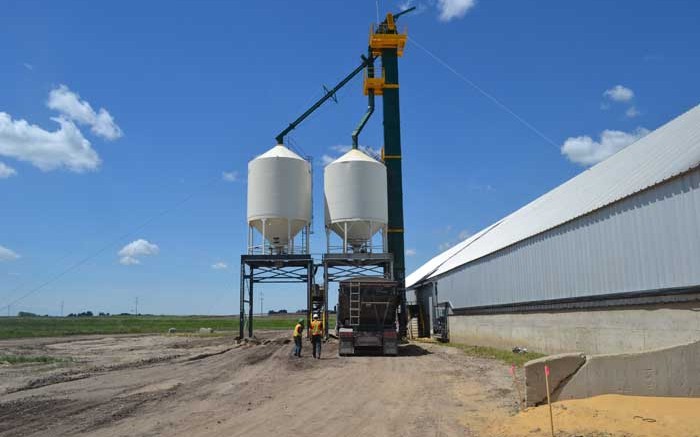
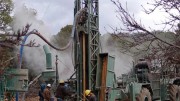
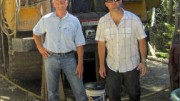
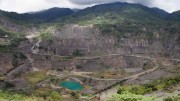
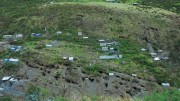
sand looks rigth thing to do good luck jorgen